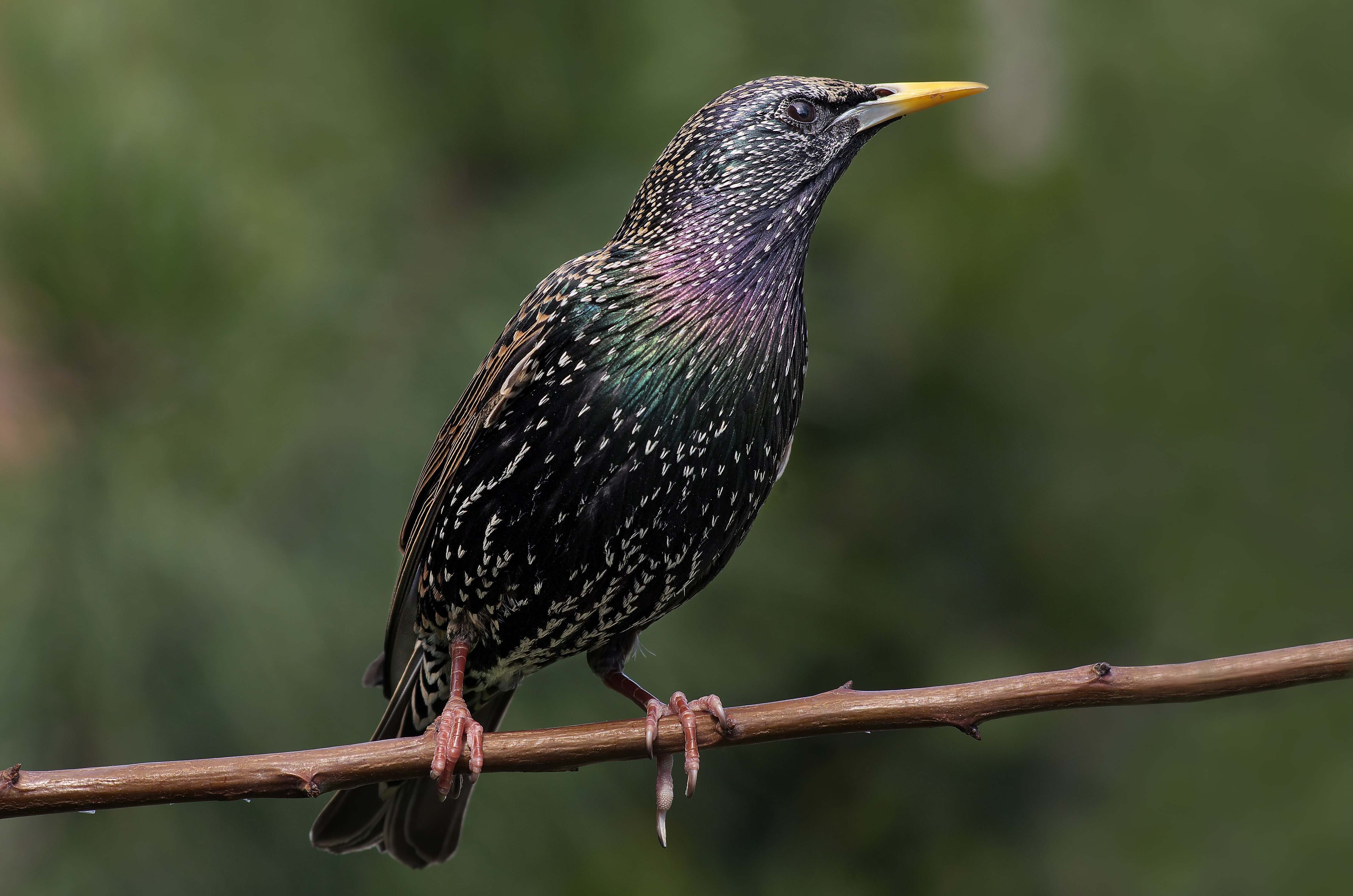The common starling earned the name "European starling" from its geographic origin. It was introduced to North America in 1890 by European settlers due to the perception that the species would help control insects. Today, there are approximately 150-200 million European starlings in North America, and the bird is known as one of the world’s worst invaders, according to the Invasive Species Specialist Group. The population is so big that only one other bird species (red winged blackbirds) out-numbers it in the United States.

What Does a Starling Look Like?
Starlings are black birds with pointed and triangular-shaped wings; short, squared tails; and reddish legs. They are eight to nine inches in length and have a wingspan of 12 to 16 inches. During the summer months (breeding season), their feathers may appear green or purple while their bills are yellow. During the winter, starling feathers are spotted with white, and their bills are dark brown or black. Male and female starlings look similar, and their young are a shade of gray-brown.
Behavior and Feeding
European starlings are social birds and often congregate in large, multi-species flocks to feed and roost. Sometimes their flocks can number in the thousands. With populations that large, it is easy to see how common starlings can quickly take over your property or any place they land.
Starlings are opportunists and are highly adaptable to the environment around them. Starlings are often found at livestock facilities, agricultural fields and garbage dumps where potential food sources are easily accessible. Starlings are also very common in large cities. Large flocks of starlings can damage areas by contaminating property with their droppings. A starling's diet is broad and depends on the season. They will eat insects, fruits, seeds, livestock rations and discarded food. Bird feeders are often frequented by starlings, and these birds will compete with other native birds for feeding and nesting space.
Damage Control
Once European starlings have settled at a feeding site, it is difficult to get rid of them. The following has been recommended to help manage unwanted starling populations:
- Frightening tactics, such as loud noises or visual aids, may help to deter them for a short time, though these methods tend to prove ineffective because starlings will quickly adapt and ignore these types of deterrents. If you attempt this method, the best results seem to come from using a combination of sound and visual scare tactics.
- Eliminating or reducing available food sources can help deter starlings. Moving livestock or pet food under a cover, buying starling-proof bird feeders and reducing access to garbage can help steer starlings away.
- Removing starling nests can be time consuming and only temporarily effective. Plus, some birds and their nests may be protected by law and often look similar to starling nests. Trimming tree branches near your home can lessen the chances of starlings building their nests.
- Habitat modification such as repairing and filling any holes around your home that might serve as entry points for starlings, can help keep them from settling into your home and/or structure.
Starlings are generally a nuisance to have on your property, especially when large flocks are present. They are loud and destructive, and their aggressive nature can scare off other native birds. In addition, they may carry parasites such as mites and bacterial and other pathogens that can be public health issues. Trying to get rid of starlings on your own can be difficult. Instead, consider contacting experienced wildlife technicians that can help assess and mitigate the issue. Contact Terminix® to schedule a FREE inspection.




